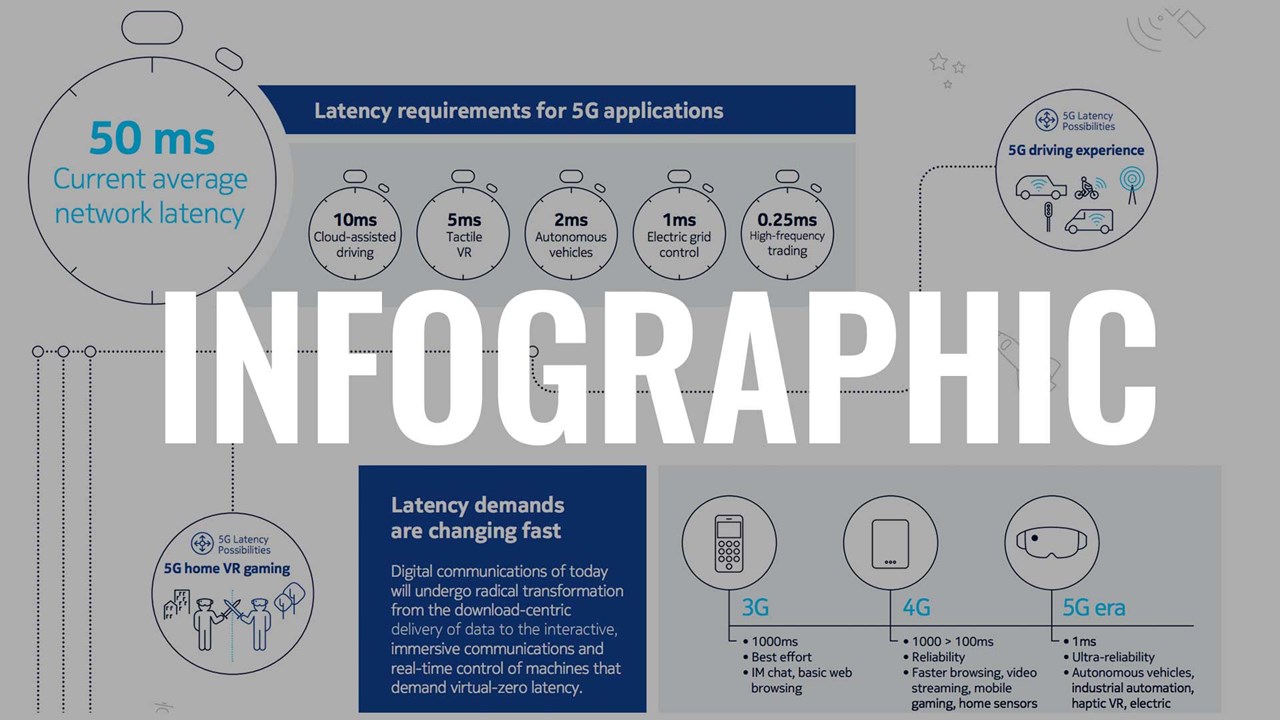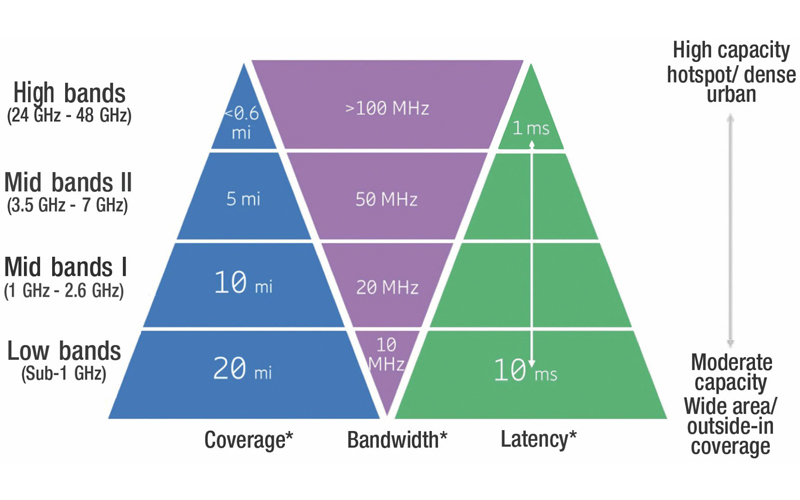Ericsson and Telia said to provide lower 5G latency & power dissipation/longer battery life
Ericsson and Swedish telco Telia have joined forces with Qualcomm Technologies, Inc. to jointly test a claimed “industry-first feature” in Telia’s commercial 5G network.
This industry initiative adds to Telia and Ericsson’s 5G alliance with the purpose to enable better 5G for both smartphone users and advanced and emerging 5G use cases for consumers and enterprises.
The new 5G Standalone* (5G Core network) – the inactive state of Radio Resource Control (RRC Inactive) – reduces the amount of signaling required during state transitions, making it possible to significantly lower both latency and battery consumption, which are crucial requirements for many Internet of Things (IoT) and 5G use cases, including critical control of remote devices, enhanced mobile broadband, and smart transport.
* 5G Standalone (5G SA) is the eventual architecture of 5G networks, increasing efficiency and helping develop new use cases. Many 5G networks have been deployed in Non-standalone (NSA) mode where the underlying 4G network layer supported the necessary signaling. 5G SA removes this 4G dependency. With 5G SA faster network connection times, simpler mobility management and immediate access to wide 5G bands provide an even better user experience.
…………………………………………………………………………………………
RRC Inactive was implemented using Ericsson’s software and 5G Standalone network nodes and a test device powered by Qualcomm’s Snapdragon X60 Modem-RF System. The two companies were able to demonstrate the successful transition between a connected state and inactive state without the device falling back to idle.
The transition to this new inactive state reduces the amount of signaling required during state transitions, significantly lowering latency for the end user, as was seen in this test where the access latency was shortened by up to 3x. This shortened transit delay time could have a big impact in user experience in applications such as cloud gaming where fast multi-player interactions require 20-30ms end-to-end latency. For an immersive VR gaming experience, the latency and reliability requirements are even more demanding.
Since the shorter latency makes it possible to reduce the inactivity timer, the partner companies were also able to see battery savings of up to 30 percent for the modem compared to not activating the feature. While the screen and its associated electronics are the most power-consuming components in a mobile device, implementing the feature will result in a longer battery life for a 5G smart phone user, too.

“Latency has now become a critical issue,” says Kester Mann, Director of Consumer and Connectivity at CCS Insights. “Speed and latency were always offered as the twin advantages of 5G, but now my perception is that latency has now become more important than speed.”
Latency management for applications will require a whole new set of control-points and techniques, such as segment routing to be applied right across the network (including the fixed parts) up to and including the end-user device – especially if there still any ambition to get to ‘sub-millisecond’ transmission for some applications (as in the above diagram).
It’s critically important to note that 1 way latency includes the 5G RAN, 5G Edge and Core networks. Also, that neither ITU-R 2150 recommendation or 3GPP Release 16 meet the URLLC latency performance requirements for the RAN, which is: <=1 msec for the data plane and <=10msec for the control plane as per ITU-R M.2410.

Image Credit: Thales Group

Image Credit: Broadband Library
…………………………………………………………………………………………..
Ericsson claims the development of the ‘inactive state’ has largely been driven by the growing field of Machine-type Communication (MTC), part of 3GPP’s specifications program, where Ericsson claims a leading role. In most MTC scenarios, the amount of data that wireless devices typically exchange with the network is small and usually not urgent enough to justify the high battery consumption required to handle all the signaling involved in the legacy idle-to-connected transition.
…………………………………………………………………………………….
Stefan Jäverbring, CTO, Telia Company, said: “We’re excited to be able to provide new and enhanced experiences for our customers through our close partnership with Ericsson. Our partnership has enabled this industry- and world-first feature, and this technology milestone is fundamental in making more efficient use of mobile network resources and meeting critical requirements with effective solutions.”
Jenny Lindqvist, Head of Ericsson Northern and Central Europe, said: “We’re proud to jointly with Telia and Qualcomm Technologies demonstrate a world-first innovative solution that will provide a significant boost in 5G benefits for a better mobile experience. This is already a huge milestone in taking 5G technology to the next level, and Radio Resource Control will continue to play a critical role for 5G networks for years to come.”
Enrico Salvatori, Senior Vice President and President, Qualcomm Europe/MEA, Qualcomm Europe, Inc., commented: “We are proud to have worked with Ericsson and Telia on bringing this key feature to commercialization. Reduced latency, shorter-time-to-content and increased battery life are high on the must-have lists for users and RRC Inactive helps to deliver them all.”
The development of the inactive state has largely been driven by the growing field of Machine-type Communication (MTC). This is part of 3GPP standardization where Ericsson has had a leading role in defining the functionalities. In most MTC scenarios, the amount of data that wireless devices typically exchange with the network is small and usually not urgent enough to justify the high battery consumption required to handle all the signaling involved in the legacy idle-to-connected transition. For current and future 5G use cases with a large and growing number of devices, improved connection, state, and mobility handling have been identified as key elements of efficient support.
5G skeptic William Webb said, “It’s a good practical development, but I think there is a dash of 5G-style confusion in there too. It’s not clear what or who this is aimed at. Is it aimed at (IoT/MTC) machines or mobile game users?”
……………………………………………………………………………………..
References:
https://www.ericsson.com/en/news/3/2021/5g-feature-enabling-lower-latency-and-increased-battery-life
https://www.thalesgroup.com/en/markets/digital-identity-and-security/mobile/inspired/5G
https://broadbandlibrary.com/5g-low-latency-requirements/
One thought on “Ericsson and Telia said to provide lower 5G latency & power dissipation/longer battery life”
Comments are closed.



Ericsson said it has won just 2% of the latest tender for 5G radio network equipment at China Mobile. The contract for the 700 MHz band is much less than the 11% share awarded the Swedish network equipment company in the previous tender for 5G in the 2.6 GHz band. Ericsson said this is likely a consequence of Sweden banning Chinese suppliers Huawei and ZTE from its 5G networks.
“There is a high risk regarding future market share in [core networking] in Mainland China and the company has made a write-down of -SEK0.3 billion for pre-commercial product investments for the Chinese market,” Ericsson said. The lower China market share award follows the decision by the Swedish Post and Telecommunication Authority (PTS) to exclude Chinese vendors’ products from the 5G auction in Sweden.
Huawei won 58.9% of China Mobile’s 5G tender, which was to be expected.
https://www.ericsson.com/en/press-releases/2021/7/ericsson-tilldelad-reducerad-marknadsandel-av-china-mobile